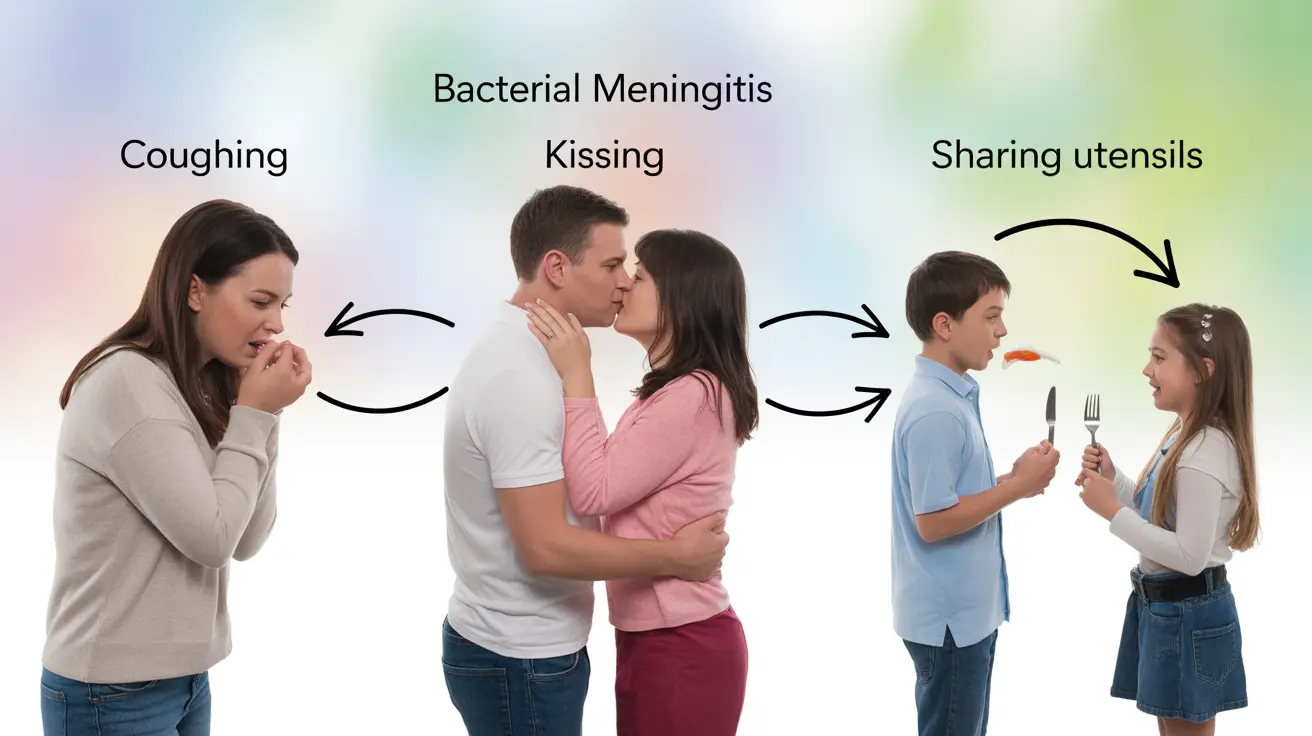Bacterial meningitis is a serious infection that causes inflammation of the protective membranes surrounding the brain and spinal cord. Understanding its contagious nature and transmission methods is crucial for prevention and public health safety. This comprehensive guide explores how bacterial meningitis spreads, prevention strategies, and who faces the highest risk of infection.
How Bacterial Meningitis Spreads
Bacterial meningitis can spread between people through various mechanisms, primarily through close contact with an infected person. The bacteria typically transmit through respiratory and throat secretions, including activities such as:
- Kissing
- Coughing or sneezing in close proximity
- Sharing eating utensils
- Extended close contact, especially in shared living spaces
It's important to note that not everyone exposed to the bacteria will develop meningitis, as our immune systems often successfully fight off the infection before it reaches the protective layers of the brain and spinal cord.
Prevention Strategies and Protective Measures
Taking proper precautions can significantly reduce the risk of contracting or spreading bacterial meningitis. Key preventive measures include:
- Maintaining good personal hygiene
- Regular handwashing with soap and water
- Avoiding sharing personal items like water bottles or utensils
- Getting vaccinated against common bacterial causes
- Practicing respiratory hygiene (covering coughs and sneezes)
The Role of Vaccination
Vaccines represent one of the most effective tools in preventing bacterial meningitis. Current vaccines protect against several common bacterial strains, including Neisseria meningitidis (meningococcal meningitis), Streptococcus pneumoniae, and Haemophilus influenzae type b (Hib). These vaccinations are particularly important for high-risk groups and are often required for college students living in dormitories.
High-Risk Environments and Populations
Certain environments and populations face an elevated risk of bacterial meningitis transmission. These include:
- College students in dormitories
- Military personnel in barracks
- Infants and young children
- Elderly individuals
- People with compromised immune systems
- Those living in crowded conditions
Understanding these risk factors helps identify who might need additional preventive measures or more frequent medical monitoring.
Frequently Asked Questions
Is bacterial meningitis contagious and how does it spread between people?
Yes, bacterial meningitis is contagious and primarily spreads through respiratory and throat secretions. Close contact activities like kissing, sharing drinks, or being exposed to coughs and sneezes from an infected person can transmit the bacteria.
What precautions can I take to prevent catching or spreading bacterial meningitis?
Key precautions include maintaining good hygiene, getting vaccinated, avoiding sharing personal items, washing hands frequently, and practicing proper respiratory hygiene. If you've been in close contact with someone diagnosed with bacterial meningitis, consult a healthcare provider immediately.
How effective are vaccines in preventing bacterial meningitis infection?
Vaccines are highly effective at preventing many common types of bacterial meningitis. Current vaccines provide significant protection against major bacterial strains, though effectiveness can vary depending on the specific type of bacteria and individual factors.
Can bacterial meningitis be transmitted through casual contact or sharing household items?
While bacterial meningitis typically requires close contact for transmission, sharing certain household items like drinking glasses or eating utensils can potentially spread the bacteria. However, casual contact like briefly being in the same room as an infected person carries a low risk.
Who is most at risk for bacterial meningitis and how can close living environments increase infection risk?
Those at highest risk include college students in dorms, military personnel in barracks, young children, elderly individuals, and people with weakened immune systems. Close living environments increase risk due to frequent close contact and potential sharing of personal items among residents.




